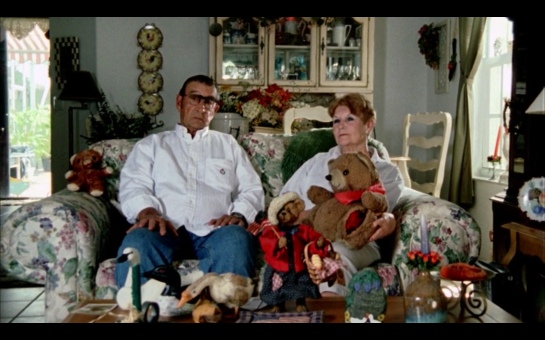
Grizzly Man (Herzog, 2005)

Grizzly Man (Herzog, 2005)

Bajillion Dollar Propertie$ (Seeso, 2016 to Current), S1.E6 “Roger Me Rightly”
“…. During the Depression, more African American women worked in popular movies than ever before. The hitch was that the place the film industry found for the black actress was in the kitchen or pantry or servants’ quarters….
“The Hollywood diva… was dressed by the studio in gingham and rags and made to speak a dem-and-dose dialect. Audiences saw black movie heroines playing servants–and rigidly stereotyped ones at that…. demeaning as Hollywood’s casting system was, some remarkable African American women were able to inject vigor and some pizzazz into their cheap trashy roles. Interestingly enough, the black woman of the 1930s films came–on her own terms–to represent beneath the stereotype the idea of energy, drive, spunk, and that good-old American virtue of self-reliance and self-sufficiency too: the ability to get through, no matter what…. giving in the long run intensely interesting, idiosyncratic performances….”
Donald Bogle, Brown Sugar: Over One Hundred Years of America’s Black Female Superstars, p. 73

Fargo (FX, 2012-Current), S2.E1 “Waiting for Dutch”

Parks and Recreation (NBC, 2009-2015), “The Pawnee-Eagleton Tip-Off Classic” (S6.E3)

Fargo (Coen, 1996)
“…. The image of the man gone to pot, fat and feminine, was increasingly common as appetite and exercise became more important in the 1950s and 1960s. If fatness was not caused by a deficient thyroid, fat nonetheless seemed to diminish another set of glands…. Peter Wyden, double-chinned executive editor of the Ladies Home Journal, wrote about The Overweight Society in 1965; three years later he co-authored Growing Up Straight. With his wife Barbara, woman’s editor for the New York Times Magazine, Peter Wyden found that the same constellation of overprotective mother and weak father that lay behind obesity was also responsible for homosexuality. To be fat not only threatened an immediate sexual neutering but an imminent sexual inversion….”
Hillel Schwartz, Never Satisfied: A Cultural History of Diets, Fantasies and Fat, p. 248